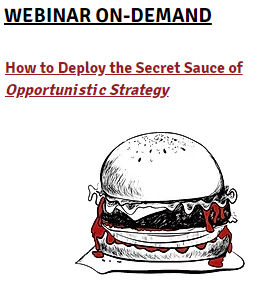Years ago, the Santa Barbara Zoo had a facinating animal on display, a slow loris.
A type of primate, the rainforest creature evades predators by moving very, very, very slowly. In fact, even slower than that. Its predators spot prey as a result of movement – the slow loris almost stands still while moving.
Unlike slow lorises, glacial speed is not a medical group’s friend. Your predators have an easier time spotting your weaknesses when you’re standing still. Your leaders gain nothing by simply protecting the status quo.
Stop thinking of slow lorises and start thinking about ducks, sitting ducks, that is.
“We’ve held the contract for 20 years.”
“The Jones Group always sends their referrals to us.”
“Bob went to boarding school with the CEO; we’re in a protected position.”
In an isolated sense, there’s truth in each of those statements and there’s nothing inherently wrong with reciting them.
But in connection with the functioning of the many interrelated systems in which these realtionships exist, they are not determinative.
As Peter Drucker said, ““Because the purpose of business is to create a customer, the business enterprise has two–and only two–basic functions: marketing and innovation.”
Going beyond that point, the goal is to retain the customer, have him, her or it buy more of your services, all while you are marketing to other potential customers and creating new “circles.”
But without change through innovation, without expansion of your service offerings, you become close to calcified. And while that’s safety for slow lorises, it’s the kiss of death for medical groups.




